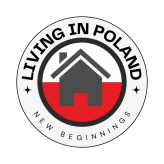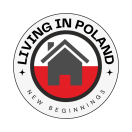🎓 Welcome to School Life in Poland!
🧒 The Polish Education System – From Tots to Teens
Poland’s state education system is mostly free, compulsory, and heavily centralised. It’s divided into several stages, and it all kicks off surprisingly early. Here’s a breakdown of what you can expect:
📘 The Stages of Education in Poland:
Here’s the typical educational journey:
👶 Przedszkole (Preschool): For kids aged 3–6. Not compulsory until age 6, but widely attended. Public preschools are cheap but may have long waiting lists. Private options abound, with fees ranging from 800 PLN to 2,000 PLN/month depending on location and facilities.
👧 Zerówka (Zero Year): This is the pre-school prep year, typically for 6-year-olds. It’s now compulsory and serves as the final step before primary school.
🏫 Szkoła podstawowa (Primary school): Lasts 8 years, from ages 7 to 15. Kids cover everything from maths and Polish to religion (optional) and computer science. The final two years are more subject-specific, almost like junior secondary school.
📚 Egzamin ósmoklasisty (8th Grade Exam): At the end of primary school, kids take this nationwide exam which influences where they can go next.
🏫 Szkoła średnia (Secondary school): From ages 15 to 19. Students choose from:
📖 Liceum (General High School): 4 years. More academic.
🛠️ Technikum (Technical School): 5 years. Academic + vocational skills.
🔧 Branżowa Szkoła (Vocational School): 3 years. Very hands-on and practical.
💬 The Language Elephant in the Classroom
State schools in Poland are Polish-language only. If your child doesn’t speak Polish, it can be… well… tough. Some schools offer “adaptation” classes or extra language help, but it varies by region and school. Younger children adapt quicker, but it’s still a challenge at first. Think of it as immersion therapy – brutal but effective.
💶 Costs in State Schools
Public schools are technically free, but “free” in Poland doesn’t always mean free-free:
💸 Textbooks are provided up to Grade 8, but not always in perfect condition.
🍽️ School dinners? About 6–10 PLN per meal. Usually a hot two-course affair, surprisingly decent.
🎒 Parents often chip in for things like classroom supplies, trips, or the end-of-year teacher gift. It’s not mandatory, but definitely expected.
🧑🏫 Teachers and Inspectors
Teachers are well-trained and often strict (hello, chalk and stern glares). Lessons are structured and academic. There’s a lot of testing and grading – with a rather unique 1–6 scale where 6 is top and 1 is… not great. School inspections are carried out by the Kuratorium Oświaty (Educational Board), and while schools are monitored, there’s some variation in standards.
🏫 International Schools in Poland – English, Anyone?
If your kids don’t speak Polish (and you’re not quite ready to throw them into the deep end), international schools are a great – if pricey – option. Here’s a roundup of some well-known international schools in Poland:
🇬🇧 The British School Warsaw (Nord Anglia Education)
📍 Location: Warsaw
🎓 Curriculum: English National Curriculum + IB Diploma
👶 Ages: 2.5 to 18
💶 Fees: 40,000 – 90,000 PLN per year depending on age group
🌐 Website: nordangliaeducation.com
🇺🇸 American School of Warsaw (ASW)
📍 Location: Konstancin-Jeziorna (suburb of Warsaw)
🎓 Curriculum: American + IB
👶 Ages: 3 to 18
💶 Fees: 50,000 – 110,000 PLN per year
🌐 Website: aswarsaw.org
🇫🇷 Lycée Français de Varsovie
📍 Location: Warsaw
🎓 Curriculum: French National
👶 Ages: 2 to 18
💶 Fees: Around 30,000 – 60,000 PLN/year
🌐 Website: lfv.pl
🌍 International School of Krakow (ISK)
📍 Location: Kraków
🎓 Curriculum: American + IB
👶 Ages: 3 to 18
💶 Fees: 40,000 – 85,000 PLN/year
🌐 Website: iskonline.org
🇩🇪 Willy-Brandt-Schule Warsaw
📍 Location: Warsaw
🎓 Curriculum: German
👶 Ages: 6 to 18
💶 Fees: Vary depending on status, partially subsidised for German nationals
🌐 Website: wbs.pl
💡 Things to Consider When Choosing a School
👣 Location: Bigger cities like Warsaw, Kraków, Gdańsk and Wrocław have more options. Smaller towns? Not so much.
💵 Budget: International schooling is expensive. Some companies offer education as part of an expat package, so check!
🗣️ Language: Consider how important Polish language acquisition is. International schools may delay fluency.
📖 Curriculum: IB? British? French? German? Choose something that aligns with your long-term plans.
🥪 School Life – The Little Stuff That Matters
Polish school life has some quirks that are worth knowing:
📅 School year: Starts 1st September and ends in late June. Two semesters, with Christmas, winter (Feb), and Easter breaks.
🎒 Backpacks: Kids carry their books every day. Some schools have lockers, many do not. Prepare their tiny spines.
⏰ Timetable: Varies day to day – one day they may finish at 12:00, the next at 3:30. It’s chaotic but normal.
🧪 Homework: Expect plenty. Even young children are often given daily tasks to complete at home.
📢 Parent-Teacher Contact: Many schools use an online portal (Librus or Vulcan) where you can see grades, homework, and messages from teachers.
👨👩👧👦 What About Integration?
Polish kids are generally warm and friendly, and friendships can blossom quickly – especially among younger kids. But without the language, the early weeks may be isolating. Many families supplement with Polish language lessons outside of school. Look for local language tutors or after-school classes.
📊 What’s the Verdict?
Poland’s education system is solid, structured and challenging. International schools are a godsend for expat families, while local schools offer a chance to integrate more deeply – if you’re ready for the language barrier. Either way, Polish education is taken seriously, and your children are likely to come out the other side more disciplined, well-read, and possibly addicted to pierogi.
🎯 Final Tips for Parents
📝 Get your child’s documents translated (birth certificate, vaccination records, previous school reports, etc.)
👨⚕️ Polish schools require a health check before enrolment – usually via your GP.
📄 Apply early – especially for preschools and international schools, as places fill up quickly!
💬 Start learning some Polish phrases – or better yet, learn with your kids. It’ll help!
So, there you have it – Poland’s education system in a pierogi-sized nutshell. Whether you go local or international, your kids will learn a lot, make new friends, and maybe even teach you a few Polish words along the way. Powodzenia! (That’s “good luck,” by the way.)
Also read: University Options in Poland















